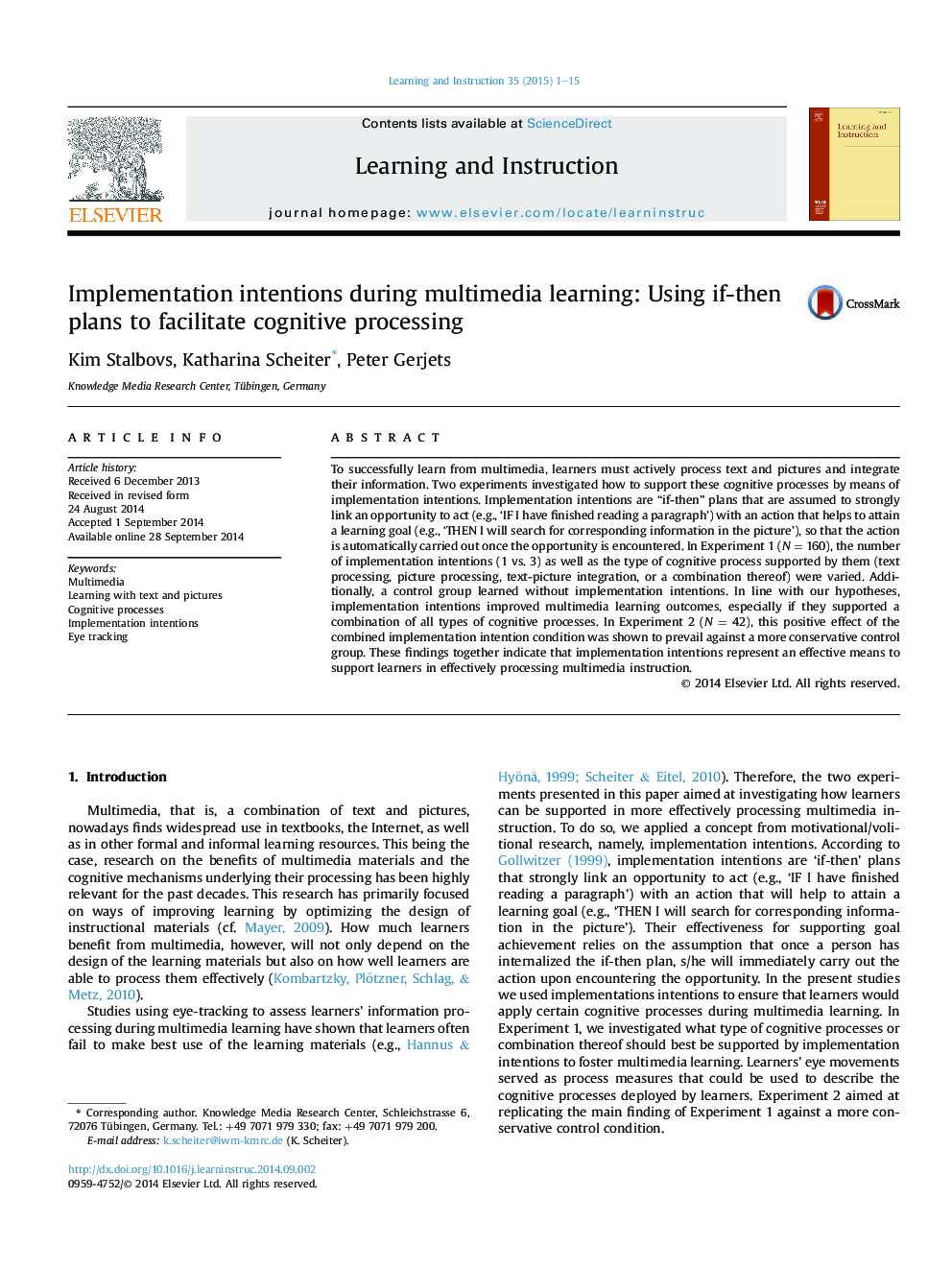| Article ID | Journal | Published Year | Pages | File Type |
|---|---|---|---|---|
| 365580 | Learning and Instruction | 2015 | 15 Pages |
•Implementation intentions are if-then plans that foster processing of multimedia.•Supporting text and picture processes, and integration simultaneously was best.•3 implementation intentions of one type were less effective than just one.•The number of transitions between text and picture predicted learning outcomes.•Implementation intentions are more effective than goal intentions.
To successfully learn from multimedia, learners must actively process text and pictures and integrate their information. Two experiments investigated how to support these cognitive processes by means of implementation intentions. Implementation intentions are “if-then” plans that are assumed to strongly link an opportunity to act (e.g., ‘IF I have finished reading a paragraph’) with an action that helps to attain a learning goal (e.g., ‘THEN I will search for corresponding information in the picture’), so that the action is automatically carried out once the opportunity is encountered. In Experiment 1 (N = 160), the number of implementation intentions (1 vs. 3) as well as the type of cognitive process supported by them (text processing, picture processing, text-picture integration, or a combination thereof) were varied. Additionally, a control group learned without implementation intentions. In line with our hypotheses, implementation intentions improved multimedia learning outcomes, especially if they supported a combination of all types of cognitive processes. In Experiment 2 (N = 42), this positive effect of the combined implementation intention condition was shown to prevail against a more conservative control group. These findings together indicate that implementation intentions represent an effective means to support learners in effectively processing multimedia instruction.
